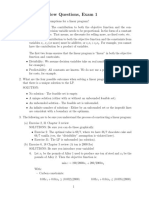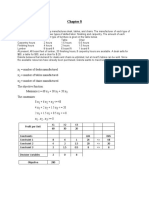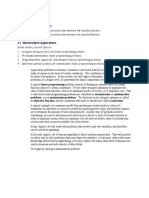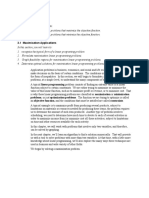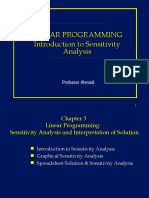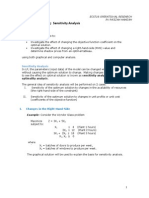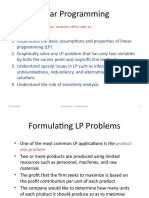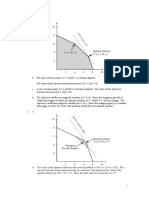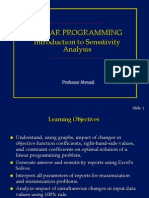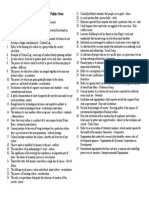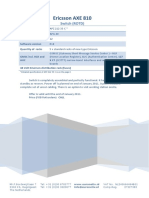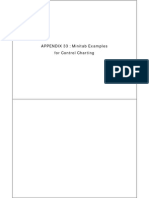0% found this document useful (0 votes)
26 views6 pagesChapter 3 Assignment - ManSci
The document presents various optimization problems with their respective optimal solutions, extreme points, and binding constraints. It discusses the impact of changes in coefficients and constraints on the optimal solutions and profits for different scenarios. Additionally, it includes dual values and recommendations for maximizing profits based on the analysis of constraints and capacities.
Uploaded by
sofia tolentinoCopyright
© © All Rights Reserved
We take content rights seriously. If you suspect this is your content, claim it here.
Available Formats
Download as DOCX, PDF, TXT or read online on Scribd
0% found this document useful (0 votes)
26 views6 pagesChapter 3 Assignment - ManSci
The document presents various optimization problems with their respective optimal solutions, extreme points, and binding constraints. It discusses the impact of changes in coefficients and constraints on the optimal solutions and profits for different scenarios. Additionally, it includes dual values and recommendations for maximizing profits based on the analysis of constraints and capacities.
Uploaded by
sofia tolentinoCopyright
© © All Rights Reserved
We take content rights seriously. If you suspect this is your content, claim it here.
Available Formats
Download as DOCX, PDF, TXT or read online on Scribd
/ 6









